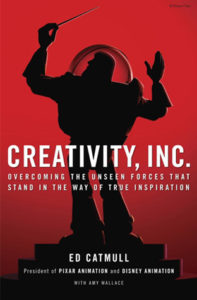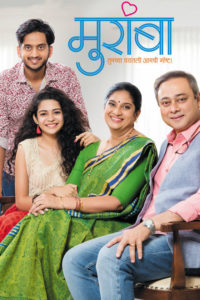As 2017 draws to an end, I had resolved from the beginning to make this a productive year, and more than anything, it turned to be a remarkable one as far as my reading goes! At the onset, there was sufficient appetite to read academic books on design and venture on a learning spree with the sole aim to pick new stuff and refresh my knowledge, challenge some preconceived notions, and change some of my perspectives and help me to go beyond the typical ‘design’ paradigm. In my search of knowledge, I also didn’t realize that I was unknowingly being influenced by the experience and writings from IDEO’s brilliant books and I was lucky to have found some lying on my shelves (that I would refer once in a while) but never got myself around to reading them completely. Now was a good opportunity then!
This is my short review of the magnificent and insightful books on design thinking and innovation this year!

Creativity, Inc.: Overcoming the Unseen Forces That Stand in the Way of True Inspiration (by Ed Catmull with Amy Wallace / Publisher: Random House) [Book Website]
In this fascinating essay, Ed Catmull charts his career graph alongside the founding and management of Pixar. From his childhood dream of working for Disney to becoming the current President of Disney and Pixar Animation Studios, Catmull recounts his love for animation, leadership, and creativity. In all that, he became instrumental in developing the technology which enabled a newly co-founded animation studio ‘Pixar’ in the 90s to create award-winning movies and disrupt the animation industry forever. In general, this book explores various perspectives in successfully leading initiatives that range from collaboration to communication, and in trying out new ideas fearlessly even if they’re destined to fail. I particularly cherished the chapter, ‘Afterword: The Steve We Knew’ that is dedicated to Steve Jobs – he bought the niche Graphics Group from Lucas Films and spun it into Pixar. My impression about Pixar from reading the book was reinforced, not just as a path-breaking studio but for spearheading the use of technology and collaborative efforts in bringing the finer details of the movie characters on the big screen. And that’s not all, it was most humbling to read about Catmull’s humane qualities as an inspiring leader and an entrepreneur in leading Pixar/Disney’s teams on the large movie projects. It’s an exceptional book and a must read for innovators.
Why Should You Pick This Book?
Having read extensively about Pixar and Steve Jobs’ contribution I was already convinced on getting an ‘insider’s look’ into the processes of the studio. So, just like me, if you are curious about Pixar’s legendary mechanism of making their animation movies that create box-office history over and over again then this book is for you. It’s also inspiring to discover Ed Catmull and his humble beginnings as a computer scientist and leading up to his current standing at Disney. There are some valuable insights to have here. Besides, if you have read the several books on Steve Jobs, you will enjoy reading more about the legendary entrepreneur from a newer perspective.


 I literally grew up watching this wonderful symbol around me, the logo of the State Bank of India (SBI), a renowned nationalised bank in India and pretty famous too. And personally,
I literally grew up watching this wonderful symbol around me, the logo of the State Bank of India (SBI), a renowned nationalised bank in India and pretty famous too. And personally,  The lush warmth of Pune’s sunshine apart, ‘Muramba’ conveyed the quintessential, endearing
The lush warmth of Pune’s sunshine apart, ‘Muramba’ conveyed the quintessential, endearing